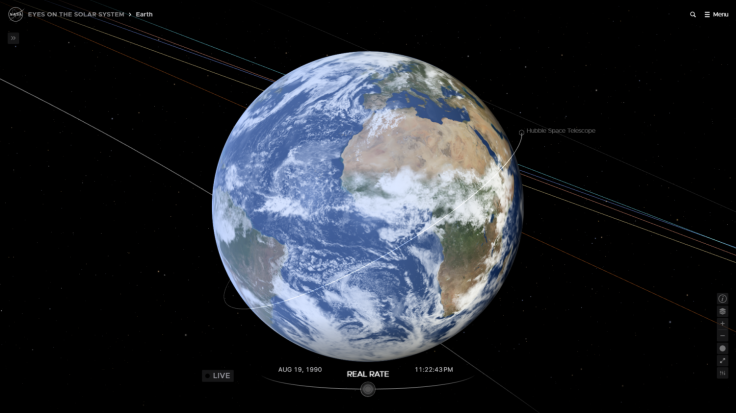However, there is no available application similar to the previously mentioned ones that allow us to explore the solar system.
Thankfully, NASA has a solution for that.
The space agency recently revamped its 3D visualization tool to allow people to use their web browsers on their PCs to explore space in a similar manner to Google Maps and Google Earth.
NASA's latest update to its visualization tool also comes with new features, including Artemis I's path to the moon.
NASA "Eyes on the Solar System" Visualization Tool Details And Features
NASA mentioned in its blog post that its new and improved 3D visualization tool, the "Eyes on the Solar System," will make interplanetary travel "easier and more interactive than ever."
The visualization tool was released in 2010 as part of a free software suite called "NASA's Eyes Visualization," which realistically simulates spacecraft, planets, and other items in our solar system based on data NASA gathered, per PC Gamer.
With NASA's latest update, which was in the making for two years, Eyes on the Solar System now features better controls, improved navigation, and various new opportunities to learn about the solar system with nothing but a PC and a web browser.
Jason Craig, the producer of the "Eyes" software at NASA's Jet Propulsion Laboratory, said that the new update on the visualization tool "really invites exploration," adding that all a person needs is "an internet connection, a device that has a web browser, and some curiosity."

Visiting NASA's Eyes website will provide you with a 3D live rendering of the solar system, or use the controls to turn back time whenever you wish.
Clicking on a planet or its orbit will show you information about it and NASA's past missions to that planet. The menu that will appear upon interacting with a celestial body offers two special features: Compare Size and Telescope Mode.
Telescope Mode allows you to see the solar system like a stationary telescope on a planet's surface, allowing you to see where other planets are in real-time from the planet of your choosing.

Meanwhile, the Compare Size feature allows you to compare the sizes of two planets in the Solar System as they rotate around their orbit in real-time.
The visualization tool also offers two view options, which are "Near" and "System View." The former view option shows you the planet at a close-up distance, allowing you to see the planet's details, orbiters, and moons up close.
Meanwhile, the latter view option gives you a bird's eye view of the planet and where its moons and orbiters are.
How To Use The New Eyes On The Solar System
People interested in exploring the solar system and knowing more about our celestial neighborhood and NASA's previous missions in the final frontier can visit Eyes' official website.
Related Article : NASA's Artemis 1 Moon Mission Launch Could Be Postponed Until October









